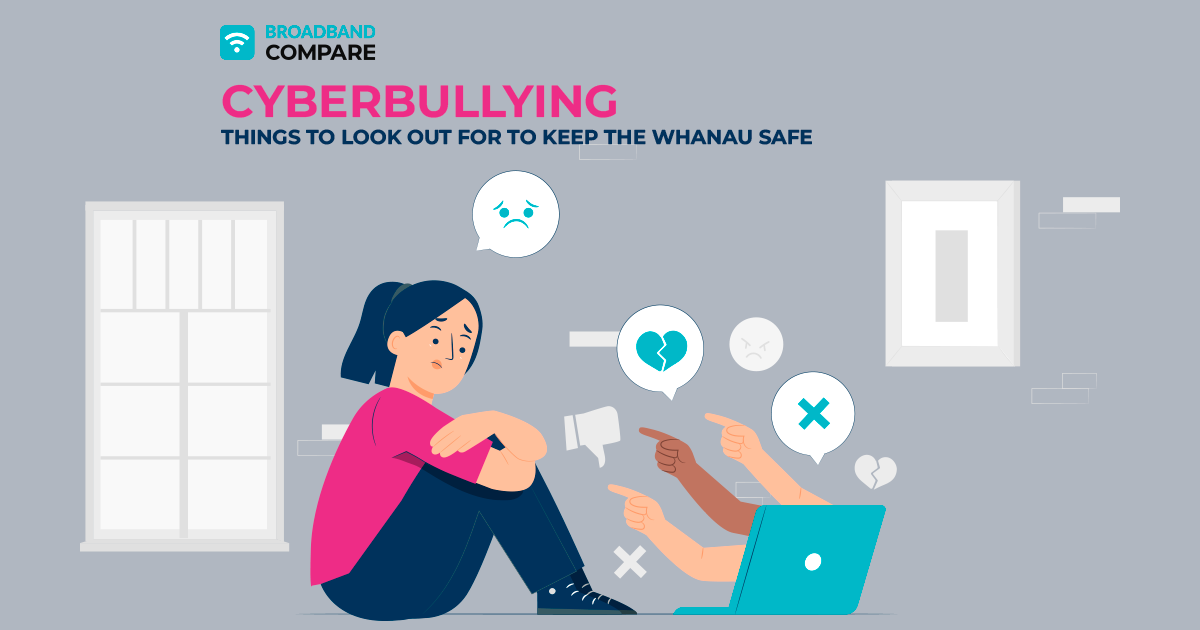While the internet can be a fun and positive place, whanau must be aware of the signs of cyberbullying to keep everyone safe.
As the digital world continues to expand and develop, more and more young Kiwis will be jumping online. While the internet is an incredible tool that can unlock a range of awesome opportunities for young Kiwis, such as creativity, gaming, learning, and upskilling, the digital world does have a dark side. Cyberbullying is an ever-present reality of the internet and it is important that whanau equip themselves and our tamariki with the tools to identify unhealthy and unsafe behaviours, and learn how to navigate their way through unsettling experiences.
In honour of Pink Shirt Day, NZ Compare wanted to shine a light on the darker side of the digital age so that whanau can better identify cyberbullying and so that parents can help their children.
What is Cyberbullying?
Cyberbullying is when someone uses their digital devices and the internet to harass, threaten, hurt, or embarrass another person. Some instances of cyberbullying can be easy to spot for parents, such as if your child shows you a nasty text message or comment on social media. However, other types of cyberbullying can be harder to spot such as posting someone’s personal information, impersonating someone with a fake account, or using photos or videos to hurt someone.
What is the Impact of Cyberbullying?
Kids and teens are almost always on their devices. Therefore, cyberbullying can significantly impact their life and they can have strong emotions and reactions to it. Cyberbullying can lead to a lack of concentration at school, and influence the way they perform academically. Those subject to cyberbullying can even contribute to mental health problems such as anxiety and depression.
Perpetrators of cyberbullying can face consequences with their school such as being suspended or kicked out of sports teams or dance groups. They may even be contacted by police.
Signs of Cyberbullying
Kids and teens are often unlikely to tell their parents, teachers and trusted adults about their experiences with cyberbullying due to the shame and stigma or fear that their devices will be confiscated at home.
It’s important to be aware of the signs and pay attention to your child’s behaviour so you can spot when something isn’t right and be on the front foot.
- These are some signs of cyberbullying
- Being upset during or after time online.
- Being particularly secretive of their digital life.
- Not performing as well at school.
- Changes in mood, sudden anger in the home, change in sleep or appetite.
- Nervous or jumpy when they get a phone or computer notification.
- Avoiding talking about their digital activities.
What Can Parents Do To Help?
If Your Child is Young, Consider a VPN
If you have quite a young child, you can invest in a VPN such as Norton 360 Premium. A VPN gives you access to tools that will help you monitor your child’s online activities. You can lock certain websites and apps that may not be appropriate for your child. A VPN will also help keep your child’s information and privacy safe.
Offer Comfort and Support
Make sure that your child knows that you are a safe space for them to turn to and offer comfort and support. As long as you are a safe space for your child to turn to, you can prevent cyberbullying instances from escalating and minimise its impact.
Keep Records
If something does happen to your child, be sure to keep a record of it such as any mean text messages, pictures or comments. You can use these records as evidence with the bully’s parents, the school and even the police.
Consider Getting Help
Meeting with a therapist is a great way for your child to learn healthy coping strategies and help work through difficult feelings. Getting help for your child can prevent them from experiencing long-term mental health consequences and can empower them to navigate the digital world safely.



